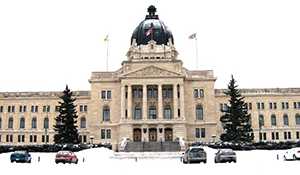Saskatchewan releases growth plan
November 16, 2019, 11:05 am


Premier Scott Moe released Saskatchewan’s Growth Plan: the Next Decade of Growth 2020-2030.
The plan is a roadmap for a strong economy, strong communities and strong families, to build a stronger Saskatchewan.
“Our province has seen unprecedented growth since 2007 and this plan sets the stage for a strong, innovative economy that will drive that growth over the next decade,” Moe said.
“Our government has always maintained that growth itself is not the goal; rather, growth will afford the ability to invest in a better quality of life for Saskatchewan families and communities. That is the purpose of growth.”
The new Growth Plan includes 30 goals for 2030, including key targets of a population of 1.4 million people, 100,000 new jobs, increasing exports by 50 per cent and increasing agriculture value-added revenue to $10 billion.
In addition, other goals for 2030 include:
Growing agri-food exports to $20 billion;
Annual private capital investment of $16 billion;
$9 billion in potash sales;
Increasing oil production to 600,000 barrels per day;
Tripling the growth of Saskatchewan’s technology sector;
Building and upgrading 10,000 kilometres of highways;
Supporting communities through $2.5 billion in revenue sharing; and
Reducing surgical wait times to a three-month target.
The Growth Plan introduces new initiatives to help the province achieve its growth targets. Three new international trade and investment offices will be established in Japan, India and Singapore. These offices will help increase exports, attract more investment to the province and strengthen key trading relationships.
The Government of Saskatchewan is also introducing two new SaskFirst New Growth Tax Incentives. An agricultural technology incentive will support the application of emerging digital technologies and will help attract agricultural technology companies to Saskatchewan.
A new chemical fertilizer incentive will encourage investment in Saskatchewan’s chemical fertilizer sector.
To help increase mining exploration and the value of mining exports, the province will reinstate Provincial Sales Tax exemptions for exploratory and downhole drilling activity.
The Growth Plan also affirms the government’s commitment to infrastructure by investing $30 billion in infrastructure over the next decade.
Specifically, the province will expand transportation infrastructure, invest in cellular and broadband infrastructure and build Saskatchewan’s export infrastructure.
The new Growth Plan includes 20 actions for the 2020s to ensure the province remains on track to accomplish the goals set out in the Plan.
These include:
Keeping the province’s finance’s strong and the budget balanced;
Growing the population by keeping more young people in Saskatchewan and increasing immigration to the province;
Maintaining a competitive tax environment and undertaking SaskFirst new growth incentives;
Delivering on Saskatchewan’s climate change plan to reduce carbon emissions;
Reducing carbon emissions in electricity production and advancing the development of zero-emission small modular reactor technology using Saskatchewan uranium;
Growing Indigenous participation in the economy through the growth of Saskatchewan’s natural resource industries and labour market development; and
Building strong communities by investing in infrastructure.
“Our province is blessed with the abundant natural resources, innovative industries and hard-working people necessary to continue our growth to 2030 and beyond,” Moe said.
“Through this plan we will build a stronger Saskatchewan that is home to a strong economy, strong communities and stron



































